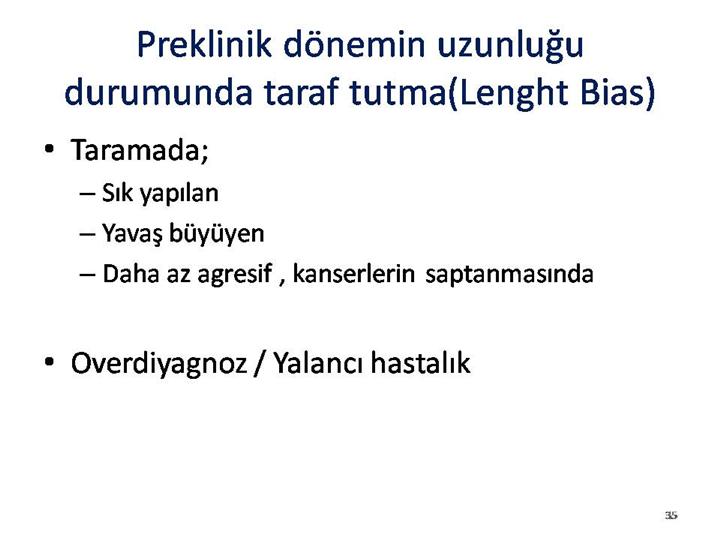| front |1 |2 |3 |4 |5 |6 |7 |8 |9 |10 |11 |12 |13 |14 |15 |16 |17 |18 |19 |20 |21 |22 |23 |24 | 25|26 |27 |28 |29 |30 |31 |32 |33 |34 |35 |36 |37 |38 |39 |40 |41 |42 |43 |44 |45 |46 |47 |48 |49 |50 |51 |52 |review |
 |
Length-biased sampling occurs when slow-growing, less aggressive cancers are detected during screening. Cancers diagnosed due to the onset of symptoms between scheduled screenings are on average more aggressive, and treatment outcomes are not as favorable. An extreme form of length bias sampling is termed overdiagnosis, the detection of "pseudo disease." The reservoir of some undetected slow-growing tumors is large. Numerous uncontrolled trials and retrospective series have documented the capacity of mammography to diagnose small, early-stage breast cancers, including those that have a favorable clinical course.[3] These trials also show that cancer-related survival is better in screened women than in nonscreened women. These comparisons are susceptible, however, to a number of important biases:
Many of these tumors fulfill the histologic criteria of cancer but will never become clinically significant or cause death. This problem is compounded by the fact that the most common cancers appear most frequently at ages when competing causes of death are more frequent. Hızlı büyüyen tümörler, hızla bir preklinil evreden geçeceklerinden taramalarda daha az rastlanabileceklerdir. Bu nedenle, sık yapılmayan taramalarda iyi gidişli bir çok yavaş büyüme gösteren tespit edilecektir. Bunun bir sonraki aşaması yalancı hastalık Length bias: Mammography detects a cancer while it is preclinical, and preclinical durations vary. Cancers with longer preclinical durations are more likely to be detected by screening; these cancers tend to be slow growing and to have good prognoses, irrespective of screening.
Overdiagnosis bias: An extreme form of length bias; screening may find cancers that are very slow growing and that would never have become manifest clinically.
Because the extent of these biases is never clear in any particular study, one must rely on randomized controlled trials to assess the benefits of screening. (Refer to the Effect of Screening on Breast Cancer Mortality section of this summary for more information.) |